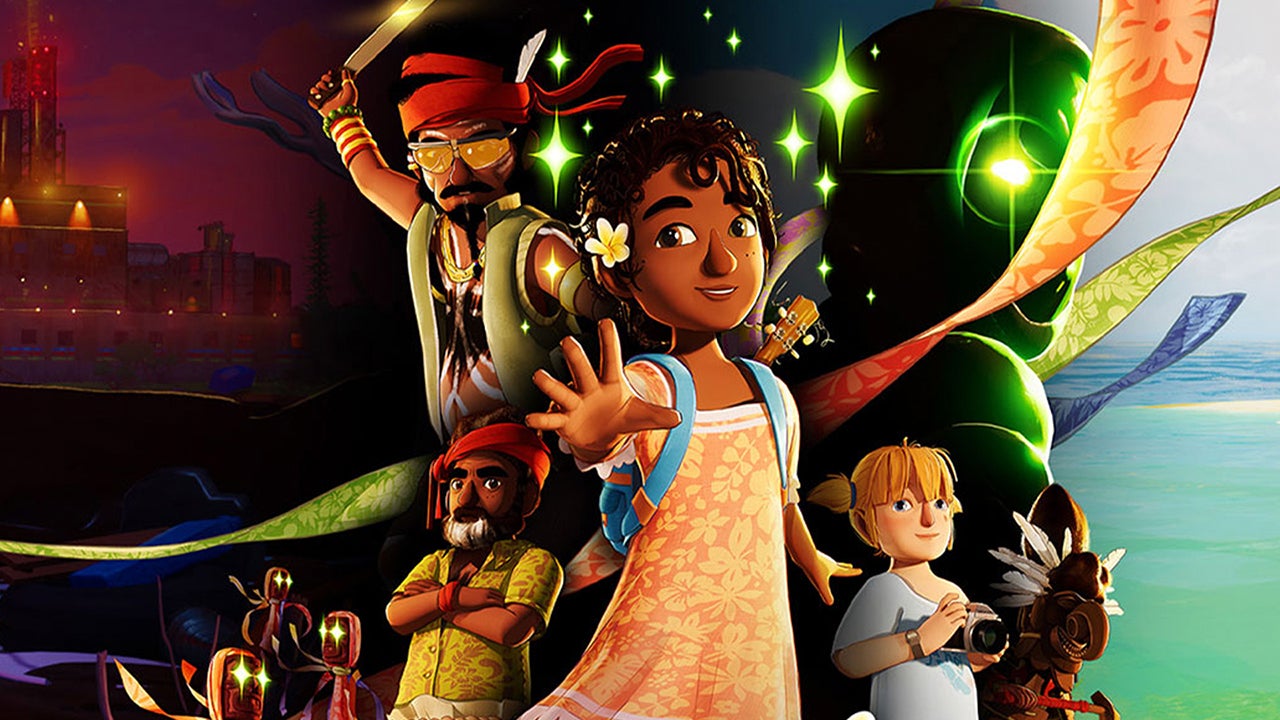From linear stories to large, open worlds full of player-driven exploration, gaming offers a wide variety of experiences. The influx of indie games has certainly been a big factor in creating this, but it’s not the only one. Regardless, there are lots of options for those who pick up a mouse and keyboard, a controller or their phones to game, which is good because not all people like the same things.
Enter Tchia, from a small development team located on an island called New Caledonia, which sits in the South Pacific, close to both Australia and New Zealand. This is the type of game we may not have seen in previous years, or on previous generations of consoles, especially given its origins. However, gaming has become more open, development has become broader and more accessible, and we gamers have only benefited from it.
Tchia centres upon a young girl, who is left to fend for herself after her father is kidnapped by an unhinged tyrant named Meavora. With the help of some friends — both new and old — she must attempt to rescue her beloved dad before something potentially happens to him. This isn’t as simple as going to Meavora’s tower and demanding freedom, of course. In fact, it involves a good amount of exploration and preparation in a game that is based on the local myths, customs, stories and practices of those living in New Caledonia, wherein things are essentially set. Its inhabitants feel that it’s rude to visit or approach anyone without bringing gifts from their region, including things like pearls, chicken(s), coconuts and more.
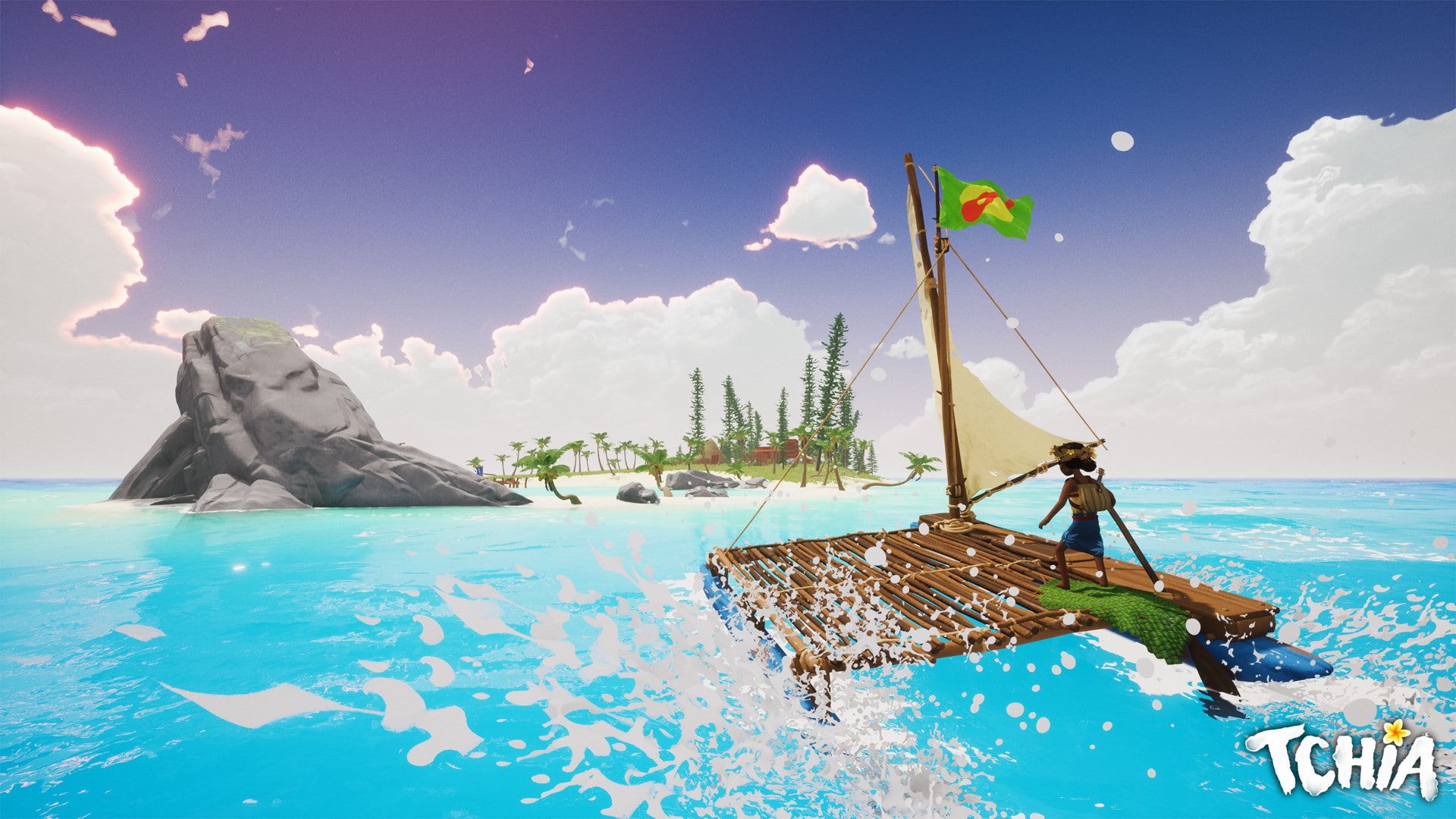
Generally speaking, this is an open world game in which freedom of exploration is at the forefront. However, there is a story that sends our young heroine throughout her local archipelago, in order to collect the things she needs to hopefully appease Meavora. How long you take completing these objectives is up to you, of course, because there’s a decent amount to see and do, including carving totems, balancing rocks, competing in land and sea races, and more. In fact, there are also a number of collectibles to find, including plants that increase your very limited stamina (seemingly from 20 points to 121) and woven trinkets. Simply put, those who wish to fully complete this thing will have a pretty lengthy adventure on their hands, even though the core campaign is only several hours long. I completed it in two sittings, over the course of maybe seven hours.
Your core objective will always be at the forefront, but the people you meet along the way will want favours of their own, so be prepared to take some time away from the main questline. Generally speaking, their favours aren’t too involved or in-depth, and can be as simple as making totems, finding them at a different location or making music with them using one of a number of different plant and tree-based instruments.
When you think of Tchia, think of a more exploration based Wind Waker and you’ll have a decent idea of what’s presented here. Like Link in that great and colourful Zelda game, Tchia must sail the Coral Sea in order to get from one island destination to another, including the much more developed, city-like island on which Meavora does business. However, unlike that which came before it, this particular title does not force players to change the wind in order to suit their needs. Things are simpler here, requiring one to simply jump on the raft boat, adjust its speed using the sail and then move to the back and take up the handle which controls travel direction. It’s not very difficult at all, and is very accessible.
Exploration is rewarded in this game, because you’ll not only find different activities, but will also be able to collect trinkets and eat stamina fruits found along the way. Furthermore, those who explore will also discover hidden chests, including some that are on the ocean floor. These generally contain different cosmetic items, which can be used to customize the main character. Her clothing (shirt or dress, pants or shorts, shoes), hair, face paint and more can all be altered at campfires, where one can also sleep and eat.
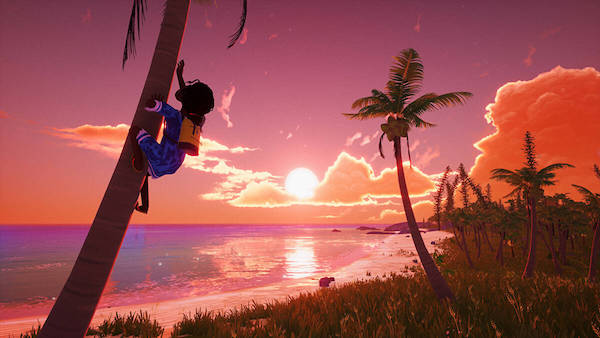
As you’d expect, our avatar can do a lot of things, from using her slingshot to shoot coconuts out of trees or hit targets, to swimming, climbing (like Link in Breath of the Wild) sailing through the air and sea and using the tops of trees to fling herself to and fro. There isn’t much in the way of combat in this game, but it doesn’t need it, and offers a lot more idyllic things. Most of the other stuff is handled in cutscenes or limited minigames, with no melee combat in sight. Granted, the length of time in which one can dive or float through the sky using a woven tapestry depends on how high the character’s stamina is. Although I did a decent amount of exploration, mine topped out at 29 when I finished the game, meaning I didn’t have a lot of time to do either before disaster potentially struck.
When you do dive into the ocean, you’ll find a varied constellation of flora and fauna, along with the occasional clam shell containing a pearl. Be warned, though: Pay attention to where the pearls are easiest to find, because one particular ally will need to be presented with a few before he’ll help you, as a sign of courtesy and respect. This quest ended up being a pain in the ass for me, because I couldn’t find any pearls while swimming nearby, and scoured the ocean for them until I found some. It had me stuck for a little while. Then again, if I was smart, I would’ve tried to find extra earlier and held them in Tchia‘s limited inventory. But, no, I had to have coconuts, tomatoes and bananas I didn’t need, along with gold trophies earned by completing races.
Exploring this beautiful and remote, South Pacific, playground is made easier by the fact that Tchia is special. She was born with a gift, which is evidenced by her green tinted eye. What this allows her to do is soul jump into certain items and other beings, including both the living and the never lived. For instance, it’s possible to become any bird, fish, shark, crab, dog or insect you see, and you’ll need to do so in order to reach certain areas (mostly with the help of birds). Hell, it’s even possible to use the ukulele to play a song that summons a bird or a dog, much like tunes can be played in order to change the time of day. However, on the other end of this, there’s also the ability to soul jump into explosive materials, including explosive rocks and gas cans, which can then be set off to aid with quest objectives.
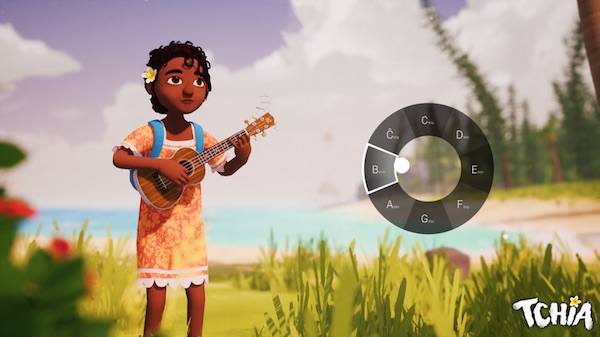
Near the end of the game, things change and become less about exploration and more about being aggressive. This means taking pictures of plants using Tchia’s camera (which is given to her by a friend, and has film that can be developed, along with a number of different, battery-based filters), finding their weak spots and attacking using explosives or something else. All the while, the game’s limited and sparse enemies — which are essentially ghastly demons comprised of cloth, with the ability to imprison our heroine by engulfing her in their own material — will be looking for and shooting at you. It’s a pain in the ass, and by far the worst part of the game; so much so that I couldn’t wait for that lengthy chapter to be over. Be warned that it’s coming, and prepare yourself for some frustration. I’m mentioning this, because it’s where you’ll do the majority of your soul jumping into explosive materials, and can be tricky because you’ll need to be right beside objectives in order to blow them up. Being a foot away won’t cut it most of the time.
Although one can definitely compare elements of Tchia to The Legend of Zelda‘s 3D iterations, the games remain quite different. Whereas Zelda is all about dungeons, puzzles, sword-based combat and using different items to get by, this is a more relaxed and explorative game. That is, until its second last chapter, which kind of sucks. You will, however, feel similarly to how you felt playing Breath of the Wild due to the fact that you’re presented with a relatively large world and must make of it what you will. There’s a helpful but sometimes frustrating map, which only shows a wide area you could be in, as well as a compass that can be used to traverse from one objective to another. Otherwise, you’re pretty much on your own. Plus, not all objectives will be highlighted, because some will require you to find things by yourself, including those aforementioned pearls.
The music is another similarity, and boy is it beautiful. This whole game was so obviously a labour of love by a small team and it truly shows in every aspect. The music — which ranges from the odd tune used to change the time of day, to intricate songs sung by large groups of people — is one of the best parts of this experience. The rhythm minigames, where Tchia can choose to play along in a Guitar Hero-esque way, are generally quite fun and a little challenging. Meanwhile, the music that is sung during these sequences is divine. The same is true of the original, culturally driven, songs that play as you’re sailing the seas. I loved every part of the music in Tchia, and also found its voice acting (done in the area’s native language, and French — its secondary language) to be really good.
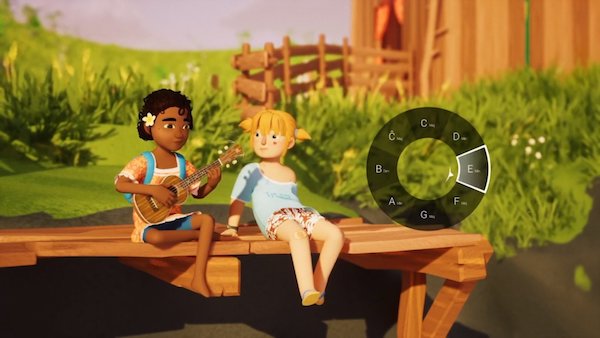
As you’ve surely already seen in videos, or just through the cutscenes featured in this review, Tchia is also a very, very colourful game. It’s reminiscent to The Wind Waker in this respect. Regardless of obvious comparisons, though, the art style found herein is wonderful. Everything pops, the world looks alive and it’s all so wonderfully beautiful. The developers may not have had a huge budget, or the tools that big budget developers have at their disposal, but they’ve done a wonderful job here. Sure, there’s a bit of roughness around the edges, and the odd glitch (like the inability to start a race, or something else that made me restart), but that’s OK.
This stylized look means that the characters’ expressions are rather limited, as are their animations. Then again, that works in this context. This isn’t supposed to be a realistic game, which is evidenced through its story and its presentation. You’re supposed to feel the freedom, enjoy the laid back island vibes and experience the best that this part of the world has to offer, which makes the abrupt turn during the second last chapter even more jarring and confusing.
At the end of the day, Tchia is a beautiful, thoroughly impressive and enjoyable work of art. It’s more than just a video game; it’s a passion project and a love letter to a part of the world we rarely hear much about. Yes, it’s rough around the edges, has some frustrating moments, and doesn’t all gel cohesively, but I always understood what the developers were trying to do and gave them credit. For a small team, Awaceb has created something magical and wonderful, which will be tough to forget, warts and all. Hell, I won’t be surprised if this ends up on some ‘Best of 2023’ lists.
This review is based on the PlayStation 5 version of the game, which we were provided with.

